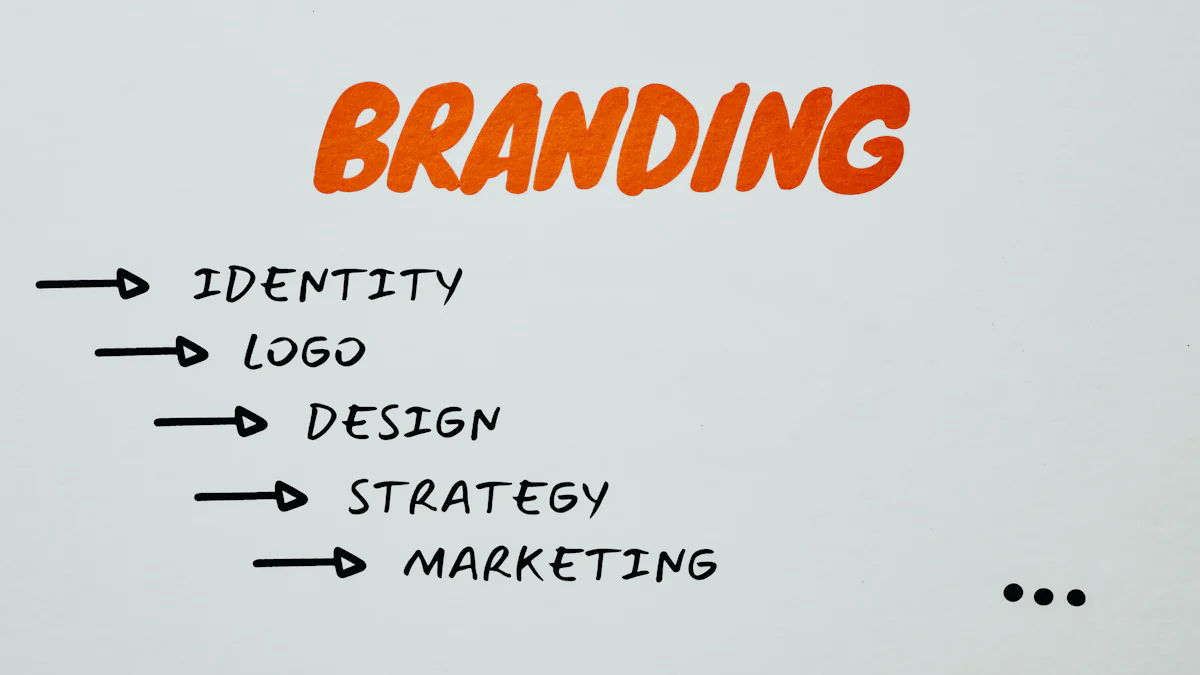In today’s competitive market, a distinct financial company brand identity is essential for setting a financial company apart. Financial company brand design is pivotal in achieving this differentiation. A meticulously crafted financial company brand design fosters trust and recognition among clients. The financial company logo design acts as a visual embodiment of the company’s values and mission. A robust brand identity not only cultivates client loyalty but also draws in new customers. For financial companies, prioritizing brand design is crucial for attaining long-term success.

Defining Your Brand Identity
Understanding Your Mission and Values
Clarifying the brand’s mission
Every financial company needs a clear mission. A mission defines the purpose of the company. The mission guides decisions and actions. A strong mission statement inspires employees and attracts clients. A mission should reflect the company’s goals and aspirations.

Identifying core values
Core values represent the principles of a company. Values influence the culture and behavior of a company. Clients appreciate companies with strong values. Values should align with the mission. Consistent values build trust and loyalty among clients.
Highlighting Unique Aspects
Differentiating from competitors
A financial company must stand out in the market. Differentiation involves identifying what makes a company unique. Unique services or products attract clients. A company should analyze competitors to find gaps. Filling these gaps creates opportunities for growth.
Emphasizing unique strengths
Every company has strengths. Highlighting strengths sets a company apart. Strengths can include expertise, technology, or customer service. Clients value companies that excel in specific areas. Emphasizing strengths builds a strong reputation in the industry.
Understanding Your Target Audience
Identifying Your Audience
Conducting market research
Market research helps you understand your audience. Data collection is crucial for this process. Surveys and interviews provide valuable insights. Analyze trends to identify customer needs. Use findings to refine your strategies.
Creating customer personas
Customer personas represent typical clients. Each persona includes demographics and behaviors. Personas help tailor your services. Develop personas based on research data. Use personas to guide marketing efforts.
Tailoring Messaging and Services
Aligning brand message with audience needs
Your brand message must resonate with the audience. Clear communication builds trust. Ensure messages reflect audience values. Consistent messaging strengthens brand identity. Evaluate feedback to adjust your approach.

Customizing services for target demographics
Service customization meets specific client needs. Different demographics have unique preferences. Adapt services to suit these preferences. Personalization enhances customer satisfaction. Satisfied customers become loyal advocates.
Developing a Unique Value Proposition (UVP)
Crafting a Clear UVP
Defining the brand’s benefits
A Unique Value Proposition (UVP) highlights what makes your financial services special. The UVP should clearly outline the benefits clients receive. Benefits could include lower fees, personalized advice, or innovative technology. Clients seek services that solve problems or fulfill needs. A strong UVP helps clients understand why they should choose your company.

Communicating the UVP effectively
Effective communication of the UVP ensures clients recognize your brand’s value. Use clear and concise language to convey the UVP. Consistent messaging across all platforms reinforces the UVP. Visual elements like infographics can enhance understanding. Regularly update the UVP to reflect changes in services or market conditions.

Crafting Brand Messaging
Creating Resonant Messaging
Using language that connects with the audience
Language plays a crucial role in brand messaging. Words should resonate with the audience. Simple and clear language fosters understanding. Avoid jargon that confuses clients. Relatable language builds trust and connection. Clients appreciate messages that speak directly to them.
Ensuring consistency across platforms
Consistency strengthens brand identity. Uniform messaging across platforms is essential. Clients expect the same tone everywhere. Consistent language reinforces brand values. Visual elements should align with the message. Regular reviews ensure all platforms reflect the brand accurately.
Designing a Visual Identity

Creating Memorable Visuals
A financial company needs a strong visual identity. A memorable brand design captures attention. Clients recognize a company through visuals. A well-designed logo and color scheme enhance brand recognition. Consistency in visual elements strengthens the brand.
Designing a financial company logo and color scheme
A financial company logo design represents the brand. The logo must reflect the company’s mission and values. Simplicity in design ensures easy recognition. A unique logo sets a company apart from competitors. Color schemes play a vital role in brand design. Colors evoke emotions and convey messages. Choose colors that align with the brand’s identity. Consistent use of colors across platforms builds familiarity.
Developing brand guidelines
Brand guidelines maintain consistency in brand design. Guidelines outline the proper use of logos, colors, and fonts. Consistency in visual elements reinforces brand identity. Employees and partners should follow these guidelines. Clear instructions prevent misuse of brand assets. Brand guidelines ensure a cohesive look across all materials. Regular updates to the guidelines keep them relevant.
Building a Strong Online Presence

Establishing Digital Channels
Utilizing social media platforms
Social media platforms offer powerful tools for brand visibility. Financial companies should leverage these platforms to engage with clients. Regular updates and engaging content attract attention. Visual content like images and videos enhance engagement. Social media allows direct interaction with clients. Prompt responses to inquiries build trust and loyalty. Each platform has unique features that can benefit financial branding. Companies should tailor content to fit each platform’s audience.
Optimizing the website for user experience
A well-optimized website enhances user experience. Easy navigation ensures visitors find information quickly. Clear calls-to-action guide users to desired actions. Fast loading speeds improve user satisfaction. Mobile optimization is crucial as many users access sites on phones. A visually appealing design keeps visitors engaged. Relevant and updated content adds value for users. Regularly testing the website ensures optimal performance.

Delivering Exceptional Customer Experiences
Enhancing Brand Loyalty
Providing excellent customer service
Excellent customer service builds trust. Clients appreciate prompt responses to inquiries. Clear communication resolves issues efficiently. Employees should display professionalism at all times. Training programs enhance customer service skills. Knowledgeable staff provide accurate information. Personalized interactions make clients feel valued. A positive experience encourages repeat business.

Gathering and acting on customer feedback
Customer feedback offers valuable insights. Surveys and questionnaires collect opinions. Analyzing feedback identifies areas for improvement. Companies should act on suggestions to enhance services. Implementing changes shows commitment to client satisfaction. Regularly updating clients on improvements builds trust. Engaging with clients fosters a sense of community. Satisfied clients become brand advocates.
Maintaining Consistency and Adapting
Using a Comprehensive Branding Kit
Ensuring brand consistency
A comprehensive branding kit ensures consistency in your brand’s presentation. The kit includes essential elements like logos, color schemes, and typography. Consistent use of these elements across all platforms reinforces brand identity. Clients recognize and trust a brand that maintains uniformity. Employees should follow the guidelines in the branding kit to prevent inconsistencies. Regular training sessions help staff understand the importance of brand consistency.

Updating branding materials as needed
Branding materials require regular updates to stay relevant. Market trends and client preferences evolve over time. Companies should review branding materials periodically. Updates ensure that the brand remains fresh and appealing. New products or services may necessitate changes in branding elements. A proactive approach to updating materials keeps the brand competitive. Clients appreciate a brand that adapts to their changing needs.
Continuous Feedback and Monitoring
Adapting to market changes
Market conditions change frequently. Companies must remain vigilant to adapt effectively. Regular market analysis provides insights into emerging trends. Adapting strategies to align with these trends ensures continued relevance. Flexibility in operations allows quick responses to market shifts. Companies should encourage innovation to stay ahead of competitors. A forward-thinking approach positions the brand for long-term success.
Strengthening the brand over time
Continuous improvement strengthens a brand. Feedback from clients offers valuable insights for growth. Companies should actively seek and analyze client feedback. Implementing changes based on feedback demonstrates commitment to excellence. Regularly assessing brand performance identifies areas for enhancement. A strong brand evolves with the market and client expectations. Consistent efforts to improve build a resilient and respected brand.

Building a strong financial brand identity requires several key steps. Define your brand’s mission and values. Understand your target audience through research. Develop a unique value proposition that highlights your benefits. Craft messaging that resonates with your audience. Design a memorable visual identity. Establish a robust online presence. Deliver exceptional customer experiences. Ensure consistency in branding materials. Adapt to market changes for continued success. Implement these strategies to strengthen your brand and achieve long-term growth.


CommentsTake the first comment